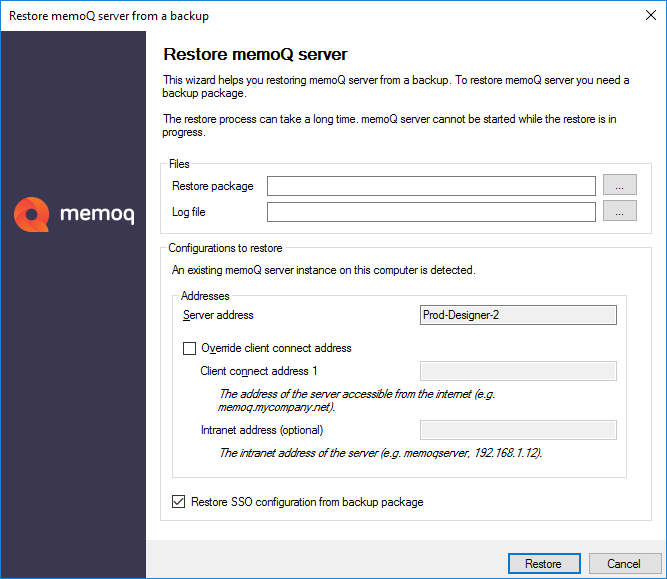If something goes wrong in the data of memoQ server, you can restore an earlier state of those data. To do this, you need to restore an earlier backup.
Do this only if you have daily backups: If you plan to use backup packages for this, it is highly recommended to run daily backups. Otherwise you may lose too much data if you restore a backup file from last week or from last month. To learn how to set up a daily backup, read the Schedule memoQ server backup topic.
- Log in to the memoQ server computer through Remote Desktop.
- Make sure you have your backup file at hand - on the server computer, not on your own.
Check if you have all necessary permissions: You must be an administrator on the server computer, and you must be in the bulkadmin or the sysadmin role on SQL Server. You also need to be in the db_owner role for the SQL Server database. To learn how to set up these roles, read the Useful SQL commands topic.
- Open the Start screen or the Start menu: Press the Windows key.
- Type memoQ, and wait for the results to appear. In the list, click memoQ Server Deployment Administration.
- Windows may ask you to confirm to run the program. Click Yes or Run.
- The memoQ Server Deployment Administration window opens.
-
In the memoQ server section, click Restore from backup. The Restore memoQ server from a backup wizard will start.

- Next to the Restore package box, click the ellipsis
 button. An Open window appears. Find the backup package, click it, and click Open.
button. An Open window appears. Find the backup package, click it, and click Open.
- You can specify a log file where the restore program keeps record of the events during the restore. This is optional, but highly recommended. Next to the Log file box, click the ellipsis
 button. A Save As window opens. Choose a folder and a name for the log file, and click Save. The log file will be a plain text (.txt) file.
button. A Save As window opens. Choose a folder and a name for the log file, and click Save. The log file will be a plain text (.txt) file.
- Leave everything as it is, and click Restore. The restore of the database and the settings begins.

 button. An
button. An